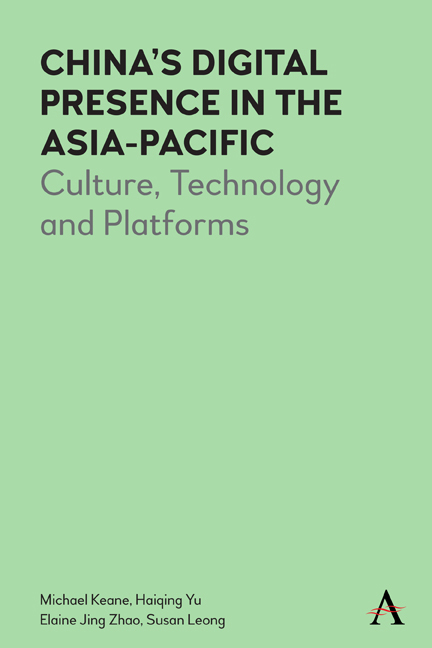7 - South East Asia: Singapore and Malaysia
Published online by Cambridge University Press: 20 January 2022
Summary
The earliest Chinese arrivals in Singapore and Malaysia were sojourners from mainland China. Few of those who arrived to trade or find employment intended to stay long in Nanyang (the Southeast) although many eventually settled after World War II. Despite the familial links to China, affective, geographical and generational distances have increased over the decades. With the PRC now moving confidently on the world political stage, making territorial claims in the South China Sea and expanding its power in the Asia-Pacific region, governments and people in the region are facing unprecedented challenges.
This chapter examines China's digital presence in Singapore and Malaysia. It begins with a brief explanation of the juxtapositions of national and cultural identity in these states, peoples’ identification with Chinese culture and language dialects and the growing presence of the nation-state of China, including an influx of PRC migration. The term ‘PRC migrants’ is used here to distinguish between post-1980s migrants from mainland China and earlier pre-1980s generations of migrants. We note an ambivalence and sometimes resistance to Chinese investment despite its potential for development. In Singapore where the ethnic Chinese dominate, the arrival of PRC foreign capital, businesses and people has further deepened delineations. Malaysia, with less ethnic Chinese among its population, is similarly ambivalent, with Chinese language remaining a barrier to acceptance.
We then consider China's digital presence. In doing this we draw from a series of semi-structured interviews held in Singapore and Malaysia in 2019. Ambivalence to China, and Chinese products and services, appears in some of the responses. Fifteen interviews were conducted with the help of images featuring digital corporation logos, figureheads of the digital corporations and promotional advertisements for pop cultural content: lengthier conversations developed from these visual prompts, including questions about Chinese products, services, platforms and brands. There is no intention to claim statistical significance but we do construe the interviews as first-hand accounts of and insights into how well China's cultural presence is faring.
Chinese presence in Singapore and Malaysia
Singapore today is one of the few Chinese-majority societies in the world. It is often regarded as a part of Greater China. Singapore's image, and the citizenry's view of Singapore, is first and foremost as a place of business.
- Type
- Chapter
- Information
- China’s Digital Presence in the Asia-PacificCulture, Technology and Platforms, pp. 119 - 134Publisher: Anthem PressPrint publication year: 2020



